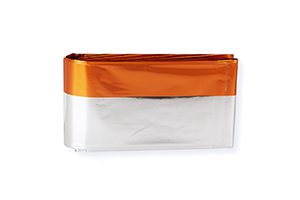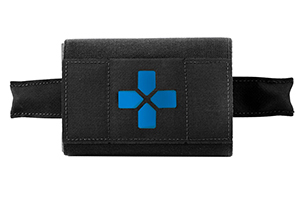Dec 6th 2021
Cold Weather Injuries – Treatment and Prevention
BFG Med Blog
Always Better. | December 7th, 2021
It’s that time of the year. Whether you are in the mountains of some far-off land hunting the enemy or the woods close to home hunting Bambi’s dad, the environmental dangers are the same. Cold can be every bit as much a killer as a bullet.
In keeping with the scope of the BFG MED BLOG, we will be discussing field care of minor injuries. As always, severe injuries call for rapid transport to an advanced care facility for diagnosis and treatment. No field amputations please.
Identifying Symptoms of Hypothermia
Environmental Hypothermia, not trauma induced hypothermia as previously discussed HERE, is defined as a core body temperature below 95 degrees. A core body temperature must be taken, you guessed it, rectally. You can’t take an accurate oral or tempanic (in the ear) temperature in a cold environment. It just won’t work. Remember that it is possible to be hypothermic even when the ambient temperature is above freezing. Especially when the patient is wet.
Chances are good that you aren’t going to be willing or equipped to take an accurate rectal core body temperature in the field. So what else can you look for in a hypothermia patient?
- Shivering – but that can decrease or even stop as the patient gets worse
- Umbles – grumbles, mumbles, stumbles, fumbles from the patient may be observed and the patient may not be aware they are doing it
- Confusion
- Sleepiness
- Slurred Speech
- Changes in behavior
The largest number of Cold Weather Injuries are due to frostbite. Frostbite is damage to tissue, generally fingers, toes, cheeks and nose, due to lack of blood flow. Tissue in these extremities can fall to below 30 degrees and the tissue can die. Remember that frostbite can be environmental due to exposure over time but can also be traumatic due to sudden touching of cold metal surfaces or exposure to super-cooled liquids. These traumatic cold injuries can occur instantly.
Frostbite can be recognized by:
- Numbness – in the affected area
- Tingling – in the affected area or surrounding tissue
- Blistered, Swollen or Tender areas
- Pale, Yellowish, Waxy-looking skin (gray in darker skinned personnel)
- Significant Pain – during attempts to rewarm
Hypothermia Treatment
Upon encountering a patient with hypothermia or frostbite, immediately assume they have both and treat them accordingly.
- Remove from cold - The first step is to remove the patient from the cold environment. While this may be easier said than done, you need to recognize that hypothermia is a legitimate life-threatening condition and that mission effectiveness of the patient is compromised and extraction may be the only solution.
- Rewarming – Immerse the affected body part in WARM (98-104 degree) water if available. Alternatively, room temperature rewarming or placing the body part next to a buddy’s skin may also be effective. It is VERY important that you take care with the heat source. The body part may be numb, don’t burn it. Use a non-affected part to monitor the heat source being applied to the frozen tissue. Like a mother testing the warmed baby’s milk before feeding. Also don’t rub the frozen tissue. You can cause additional damage.
- Buddy Rewarming – If unable to extract the patient, placing them in a sleeping bag in their underwear with another person should be considered. Make all the jokes you want but a good snuggle session could save a life here.
- Thawed Tissue – Once you thaw tissue using rewarming, it is critical that it not freeze again. If your patient has frostbite and it is likely to freeze again before you reach definitive care, it is better to not thaw it out.
Prevention of Hypothermia
As they say, an ounce of prevention… So I wanted to relay an old acronym that can be found in the SF Survival Guide regarding cold weather clothing.
COLDER
Clean – Keep your outdoor gear clean. Excessive dirt can break down the fibers in the material and make it less efficient.
Overheating – Don’t let yourself get overheated and sweaty. Perspiration results in evaporation which leads to cooling. It is especially important to remove layers or open up your outer garments during exertion. This is why expensive technical cold weather gear is equipped with zipper vents under the arms and in other areas. Use the venting. This step is critical.
Loose layers – Dress in LOOSE layers. Space between layers allows for warm air to gather and that leads to insulation. Layers also allow you to dress up and down during exertion.
Dry – Stay dry. We don’t need to explain this one. If you get wet, you need to remove the wet layers and dry them before putting them back on.
Examine – After leaving the field and prior to heading out again, check your gear for damage or excessive wear. The time to find out your gear isn’t working is not when you start to freeze to death.
Repair – After you examine the gear and identify a defect, repair it immediately. Don’t put it off and forget.
Don’t skimp on your cold weather equipment. BFG is known for making the finest lightweight professional-grade load carriage equipment available. Our customers recognize this and are willing to pay the premium associated with having the best. Buy once, cry once as they say. The same goes for cold weather gear. As someone who hails from the deep South, where we experience truly cold weather less than ten days a year, it is a bitter pill to swallow to pay the big bucks for a jacket that I may not even need once a year. But I have been cold enough to know that when needed there is no substitute. Don’t cheat yourself on this one and get the right gear
Also, as related to Frostbite of the feet, you want to avoid tight socks and boots. It is common for individuals to buy boots wearing a single pair of athletic socks and then to double up their socks or wear thick “winter” socks with the same boots. This will only serve to restrict blood flow and increase the risk of Frostbite. If you anticipate spending time in cold environments, you should consider having a designated set of boots appropriately sized to compensate for additional or thicker socks. Simply lacing the boots looser may not be sufficient.
Lastly, eat and drink when you are in the cold. Exposure to cold environments increases your caloric burn rate as your body works to warm itself. Food (calories) is the gas your engine needs to do its work. Also recognize that you are just as likely to become dehydrated in a cold environment as a warm one but you are less likely to recognize it. You need to keep your drinking fluids liquid and available. Sip, don’t gulp, your liquids. Your body best absorbs liquids that are introduced slowly over time and not dumped into your gut all at once. The old military practice of lining up troops and force feeding them liters of water is a terrible means of practicing proper hydration
Alcohol – The hunting camp is the place where overindulgence of alcohol happens. Be aware that intoxication may mask your awareness of impending cold injuries. If you are going to drink, don’t overdo it and stay close to the camp house or fire pit. Enough said.
Recommended Medical Items in this Article

Hypothermia Blanket
Often overlooked, it is critical that you keep trauma patients warm to prevent hypothermia and development of acidosis leading to issues with clotting (the dreaded "Lethal Triad"). A foil blanket is a necessary component in your trauma kit.
Micro Trauma Kit NOW!™
The Micro TKN was designed as an Every Day Carry trauma kit for law enforcement professionals, prepared citizens, or hunters. Deployment of critical first aid supplies can be done with one hand or a single finger from either the left or right side by pulling the BLIP featured pull tabs.
Trauma Kit NOW!™, Medium
The TKN is a first aid pouch that was designed to hold the contents of the Army IFAK but can be configured to almost any emergency medical loadout or tactical first aid kit.
Adequate training should be completed from a licensed professional before performing any first aid discussed in this article. This is not medical advice. *Banner Photo Courtesy of Department of Defense. The appearance of U.S. Department of Defense (DoD) visual information does not imply or constitute DoD endorsement.


